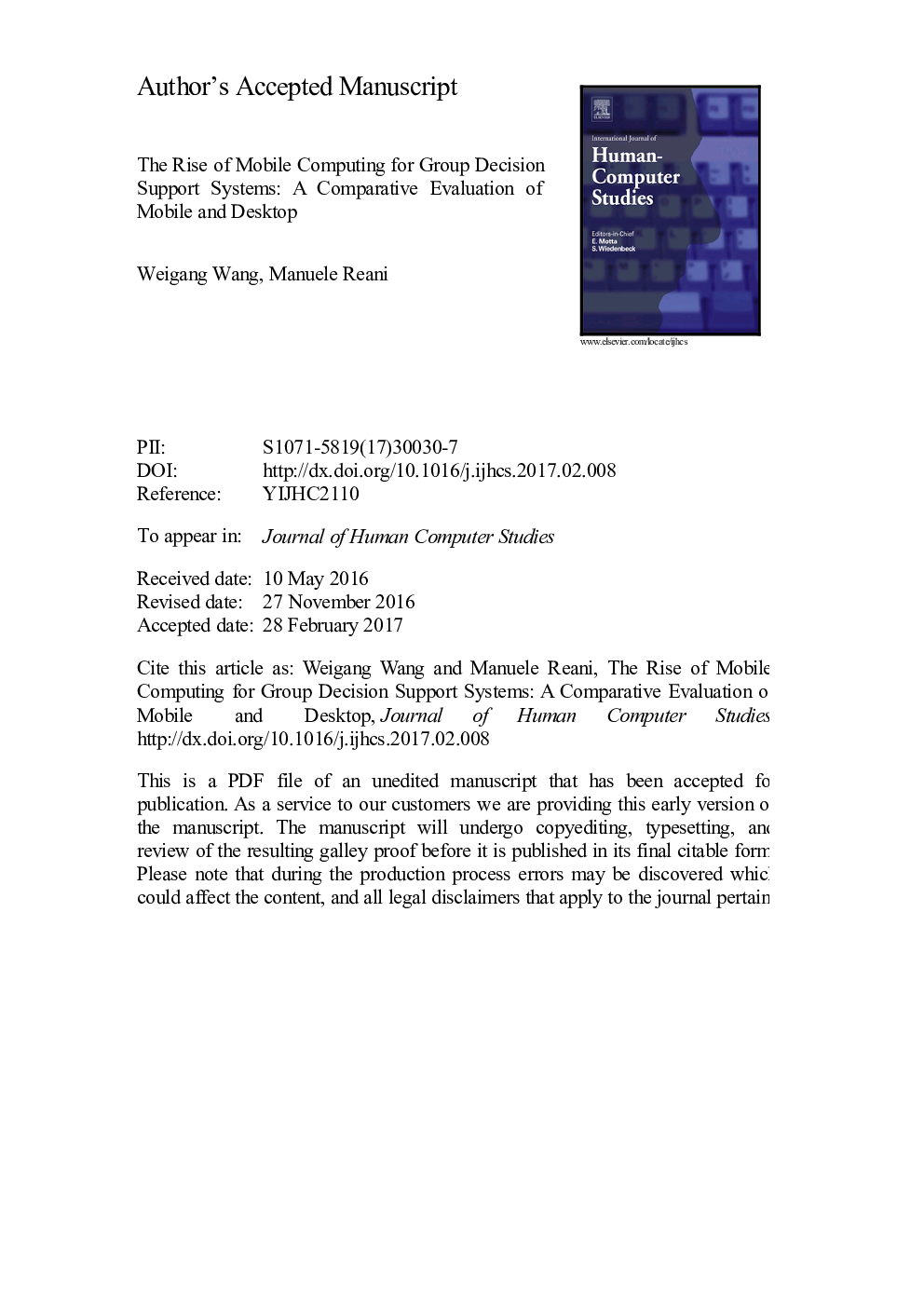| Article ID | Journal | Published Year | Pages | File Type |
|---|---|---|---|---|
| 4945779 | International Journal of Human-Computer Studies | 2017 | 43 Pages |
Abstract
The use of desktop technologies, opposed to their mobile counterparts, is still predominant in the business domain and daily corporate activities. For complex business tasks, the usability of mobile applications is still perceived as inferior. Nevertheless, mobile computing could support work activities in different ways. This research seeks to explore whether mobile applications, especially sophisticated real-time groupware such as Group Decision Support Systems can match or even outperform their desktop-based counterparts regarding task performance and user satisfaction. To provide a more comprehensive comparison, two widely used web metric frameworks, HEART and PULSE (the former focusing on human behavior and the latter focusing on technology), have been used to evaluate and compare a web-based mobile group decision support app with its desktop counterpart on a chair-led multi-step decision-making process in lab settings and real-world contexts. Moreover, data from web tracking tools and system logs of these two apps have been analyzed to deepen the level of analysis. Therefore, an innovative methodology for usability research combining lab experiments with long-term web observations is proposed. The results have shown that users interacting with the mobile version of the system had a steeper learning curve than users interacting with the desktop one. After a short practice period, participants using the mobile version of the groupware could perform as efficiently as participants using its desktop counterpart. Not only both the mobile and the desktop version of the app were used effectively for the group decision tasks chosen for this study, but also the two versions of the application were rated similarly in terms of user satisfaction. Furthermore, the mobile version had a faster adoption, better engagement, and better retention than its desktop counterpart. Despite an additional groupware middleware layer and a sophisticated user interface rendering layer, both groupware versions have yielded a user-to-user response time sufficient for real-time group interactions. These results convey important implications: as society is quickly moving towards mobile computing, web-based mobile technologies can now support multi-step group decision-making tasks.
Related Topics
Physical Sciences and Engineering
Computer Science
Artificial Intelligence
Authors
Weigang Wang, Manuele Reani,
